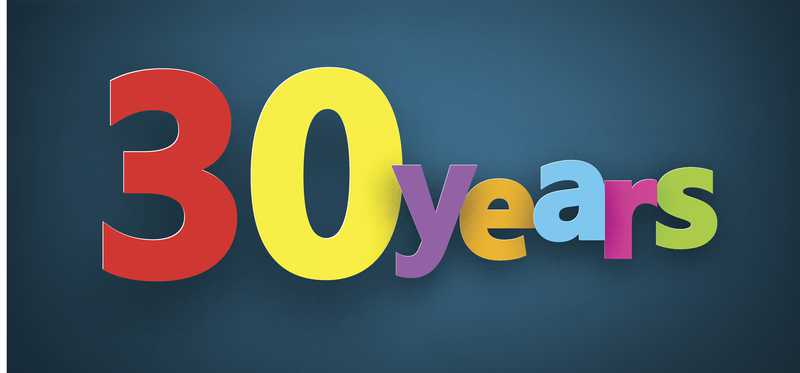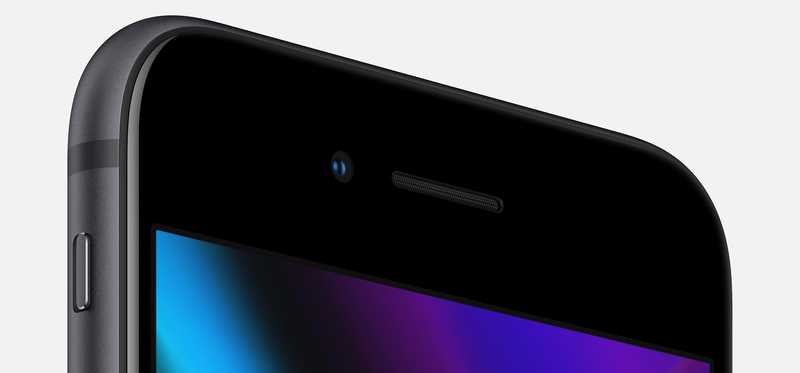Here's What These 25 Everyday Items Cost 30 Years Ago

Here's What These 25 Everyday Items Cost 30 Years Ago
Three decades can change things a lot
We typically don't give much thought to inflation, but over long periods, it can wreck havoc with the purchasing power of our dollars. Over many years, inflation has averaged about 3% annually, though there have been times when it has been very high and very low. In 2015, for example, it averaged close to 0%, while it was 6% in 1982, 9% in 1975, and more than 13% in 1980. Even at 3%, it can really shrink the purchasing power of your future dollars, as something that costs $100 now may cost about $243 in 30 years.
Here's a look at what 25 products and services cost back in 1988 -- a whopping 30 years ago. For context, 1988 was the year that Toni Morrison's book Beloved won the Pulitzer Prize for fiction, that Paul Simon's Graceland won the Album of the Year Grammy, that the world population was about 5 billion, and that George Bush was elected president of the U.S. over Michael Dukakis. For additional context, know that in 1988, the median household income in America was $25,872, which in today's dollars would be about $55,000. (Meanwhile, the median household income as of U.S. Census Bureau 2016 data is $55,332, suggesting that there hasn't been a lot of growth in income over the years.)
ALSO READ: Will Inflation Cause the Next Stock Market Crash?
Previous
Next

1. A college education
For the 1987-1988 school year, tuition at private four-year colleges was $15,160, while it was only $3,190 at public four-year institutions. Those numbers, via College Board data, have been adjusted for inflation, reflecting 2017 dollars. How does that compare to today? Well, the College Board has listed the average cost of tuition and fees for the 2017–2018 school year at $34,740 for private colleges and $9,970 for state residents at public colleges. Along with healthcare, college costs have been rising at a rate significantly higher than inflation in recent years.
Previous
Next

2. A wedding
True love may be free, but weddings tend to be costly. Cost estimates vary, but to give you an idea, the costofwedding.com website pegs the national average cost of a wedding at $25,764 (as of 2017), while theknot.com reported $33,391. How does that compare to 30 years ago? Well, a 1988 New York Times article cited the average cost of a formal and traditional-style wedding at $10,379. Fortunately, there are ways you can save on wedding costs, such as having a buffet luncheon instead of a dinner with table service, inviting fewer people, holding the event during the off-season or a weeknight, and even eloping!
Previous
Next

3. Bacon
Mmm... bacon... The recent cost of bacon averaged $5.25 per pound for sliced bacon -- in the cities tracked by the U.S. Bureau of Labor Statistics (BLS). The BLS also has data for mid-1988, when bacon cost $1.90 per pound. That's an increase of 176%, considerably higher than the overall 113% increase in prices over that period due to inflation, per the BLS. If you love bacon but not the price of bacon, you might aim to buy it when it's on sale or do some of your food shopping at discount retailers or warehouse clubs.
Previous
Next

4. Movie tickets
The national average price of a movie ticket in 1988 -- a year featuring movies such as Rain Man, Who Framed Roger Rabbit, Coming to America, Big, Bull Durham, and Die Hard -- was $4.11. The cost has increased by about 126% over the past 30 years, with the national average ticket price recently at $9.27, per boxofficemojo.com. That growth rate is a little faster than that of overall prices, but not by much -- and the recent decade has been a tough one for movie theaters, with people increasingly choosing to stream movies at home or download digital movies and spending more of their movie money on those activities than on movie tickets.
ALSO READ: Over 100 Years of Average Movie Ticket Prices in 1 Chart
Previous
Next

5. Gas
Thirty years ago, in 1988, the average price of a gallon of gas was about $0.96. Gas prices can be quite volatile, and have been as high as $4.11 per gallon a decade ago, during the summer of 2008, but the national average price was recently $2.87 per gallon. That represents overall growth of about 200%, a tripling in price over 30 years. Gas can be a major item in many of our household budgets, especially when prices are high. If you drive 250 miles per week, in large part due to a commute, and you spend $2.87 per gallon, you're looking at an annual expense of $718. Ways to shrink that cost include using public transportation when possible, driving fuel-efficient vehicles, car-pooling, driving at non-rush-hour times, keeping your tires properly inflated, and not carrying too much weight in your truck.
Previous
Next

6. Milk
Thirty years ago, in 1988, a typical price for a gallon of milk was about $2.19. Fast-forward to today, and the price is around $2.89, representing an overall increase of only 32%, far lower than inflation's 113% overall increase in prices. The dairy industry has been facing some challenges in recent years, such as the fact that the millennial generation consumes less milk than its predecessors, and that alternative "milks" such as soy and almond, have been gaining ground.
Previous
Next

7. Houses
At the end of the first quarter of 1988, the median sale price of homes in the U.S. was $110,000. At the end of 2017, the median home sale price was $323,100, representing an increase of 194%, much greater than the overall price growth during that period of about 113%. 1988 was a period of high interest rates, though, with typical mortgage rates around 10% for 30-year fixed-rate loans. If you bought a $110,000 home and paid 20%, or $22,000 down, you'd be taking out a loan for $88,000, which would cost you about $772 per month, which in today's dollars would be close to $1,200. Here's another way to appreciate what a 10% mortgage rate does: If in 1988 you borrowed that $88,000 at an interest rate that's prevalent today -- 4.5% -- your monthly payment would be only $446, fully 42% less!
Previous
Next

8. Apples
A pound of Red Delicious apples cost an average of $1.32 in late 2017 -- in cities tracked by the U.S. Bureau of Labor Statistics (BLS). The BLS also has data for mid-1988, when such apples cost $0.80 per dozen. That's an increase of only 65%, considerably lower than the overall 113% increase in prices over that period due to inflation, per the BLS. If you've been a steady apple buyer over the past three decades, your dollars have gone further, netting you more apples now than they would have years ago.
ALSO READ: How to Invest in the Organic Food Trend
Previous
Next

9. Apple stock
You just learned that the price of apples rose by 65% over 30 years. Here's a much more impressive Apple price increase -- that of stock in the Apple (Nasdaq: AAPL) company. Apple went public via an initial public offering (IPO) in late 1980. By summer of 1988, its shares were trading for around $0.10 apiece, with the price adjusted to reflect the various stock splits that have occurred since then. How has the stock done since 1988? Well, on August 2, 2018, Apple became the first American company to have its market capitalization cross the $1 trillion mark, with its shares closing at $207 apiece that day. That's roughly a 207,000% increase! How do you like them apples?
Previous
Next

10. A first-class stamp
In 1988, the cost of a first-class stamp with which to mail an envelope weighing up to an ounce increased from $0.22 to $0.25. Today's rate is twice that -- $0.50, representing a 100% increase that lags the overall price increase of 113% for the period. It's worth remembering that before 2007, whenever there was an increase in the price of postage, most of us had to invest in stamps worth one or a few cents, to add to the old stamps. In 2007, though, the Post Office introduced "Forever" stamps, which will always be valid for mailing a one-ounce first-class envelope, no matter what price was paid for them at what time.
Previous
Next

11. A personal computer
It won't be surprising that the price of computers has dropped over the past decades. A typical personal computer in 1988 was the Tandy 1000TL, which used an Intel 80286 chip, featured a 3.5-inch floppy disk drive, had 640KB of RAM -- and cost around $1,400. In today's dollars, that would be around $2,155. Today, for around $400, you can get a Dell desktop computer with 8GB RAM and a hard drive instead of a floppy disk drive -- one with a 1TB capacity, at that. Even less costly machines can be found, along with plenty of fancier ones that still cost $1,000 or less.
Previous
Next

12. Eggs
A dozen large, grade-A eggs recently cost $1.63 -- in cities tracked by the U.S. Bureau of Labor Statistics (BLS). The BLS also has data for mid-1988, when such eggs cost $0.71 per dozen. That's an increase of 131%, somewhat higher than the overall 113% increase in prices over that period due to inflation, per the BLS.
Previous
Next

13. Magazines
If you think that the price of magazines has really surged over the past few decades, you're right. Here's a look at the kinds of prices single issues sold for in 1988 and 2018:

Previous
Next

14. Cell phones
You might not think that cell phones were available in 1988, but they were. A Motorola DynaTAC 8500XL, which weighed 28 ounces, cost $2,500 or so -- which would be about $3,850 in today's dollars. Today, of course, you can get a way more powerful machine -- one that lets you do far more than just talk to someone -- for far less. A new Apple iPhone X, weighing a little more than six ounces, offers audio and video calling, a high quality still and movie camera, internet access, and gobs of other features, with a price starting around $1,000. You can get a new iPhone 7 for $550 or less, with many of the same features.
Previous
Next

15. Bread
A one-pound loaf of white bread recently cost an average of $1.28 -- in cities tracked by the U.S. Bureau of Labor Statistics (BLS). The BLS also has data for mid-1988, when the price of such a loaf was about $0.60. That's an increase of 113%, just about exactly reflecting the overall 113% increase in prices over that period due to inflation, per the BLS.
Previous
Next

16. Big-screen TVs
Back in 1988, you could get a 35" Mitsubishi Diamond Vision II 3503 television that featured CRT display technology and a resolution of 480 lines for around $3,000. That would be roughly $4,600 in today's dollars. Meanwhile, today you can buy a 60" Sony 4K Ultra HD LED TV for around $700 or less. For $4,000 or less, you can find 85" television sets!
ALSO READ: Americans Are Getting More Comfortable With Giving Up TV
Previous
Next

17. Ice cream
A half-gallon of ice cream cost an average of $2.44 in mid-1988 -- in cities tracked by the U.S. Bureau of Labor Statistics (BLS), while it more recently averaged $4.66, in mid-2018. That's an increase of 91%, reflecting slower growth than overall prices, which increased by 113% over that period due to inflation, per the BLS.
Previous
Next

18. Rent
The median monthly asking rent for housing was recently around $950. That's up from 1988, when the rate was around $550, per data from the U.S. Census Bureau. Of course, if you convert the 1988 price into 2018 dollars, the rent was more like $846. A lot depends on what kind of housing you're renting, though, and where you live. The folks at apartmentlist.com recently pegged the national median rent for a one-bedroom dwelling at $950, and $1,178 for a two-bedroom place. Those rates were $565 and $723 in South Dakota, while they were $1,450 and $1,849 in California.
Previous
Next

19. Internet access
Internet access isn't free, but it sure costs less than it used to. According to PC World magazine, it could be had via CompuServe for about $6 to $47.50 per hour -- which would be about $13 to $101 in today's dollars. The comparison doesn't end there, though -- that was for a slow dial-up connection of 300 baud to 9600 baud. Today, the average price of stand-alone Internet service (i.e. service not bundled with cable TV or other services) is around $50 to $60 per month. The average speed of that service was recently around 290 Mbps, per the folks at highspeedinternet.com. That's about 30,000 times faster than 9600 baud, says an online calculator at calculator.org.
Previous
Next

20. Sirloin steak
At the end of 1988, the average cost of a pound of USDA Choice sirloin steak was about $3.85 -- in cities tracked by the U.S. Bureau of Labor Statistics (BLS). More recently, that kind of steak has averaged $8.51 per pound. That's an increase of 121%, a bit above the overall 113% increase in prices over that period due to inflation, per the BLS. Americans are eating less beef overall, though, and more chicken. In 1988, the per-capita consumption of beef was 72.5 pounds, while it's just 56.9 pounds in 2017. Per-capita consumption of chicken has shot up from 56.7 pounds to 92.2 pounds.
Previous
Next

21. Coffee
A pound of ground roast coffee cost an average of $2.74 in mid-1988 -- in cities tracked by the U.S. Bureau of Labor Statistics (BLS), while it more recently averaged $4.29, in mid-2018. That's an increase of 57%, reflecting much slower growth than overall prices, which increased by 113% over that period due to inflation, per the BLS. Of course, over these past decades, some coffee has gotten quite expensive -- such as fancy coffees sold at coffee houses. Even those, though, can be cheaper than you'll find elsewhere in the world. According to a 2017 thisisinsider.com report, a tall latte cost $2.75 in the U.S., while small lattes in China and Russia were, respectively, $7.18 and $12.32.
ALSO READ: When It Comes to Coffee, Price Isn't Everything
Previous
Next

22. Hard drive memory
Electronic devices such as your computer tend to have hard drives in them for storing data. Back in 1988, you could get a 30MB Seagate drive for about $300, putting the cost per MB at about $10. Today, Seagate Technology (NYSE: STX) is still making hard drives, and you can get one with a 1TB capacity for $50 or less, putting the price per MB at $0.00005 or less. These days we have more storage options, too, such as the ability to store our data on the cloud, or to use thumb drives and/or solid-state hard drives.
Previous
Next

23. Camera
Snapping great photos has gotten considerably cheaper in recent years -- largely because few of us need to own cameras of our own, since our phones have rather sophisticated lenses in them. Still, great stand-alone cameras are available. Back in 1988, a quite good one would have been the Canon EOS 650, which sold for around $600. In today's dollars, that would be around $923. These days, Canon DSLR (digital single-lens reflex) cameras with plenty of great features can be found new for between around $400 and $800.
Previous
Next

24. Electricity
A kilowatt hour of electricity cost an average of $0.084 in mid-1988 -- in cities tracked by the U.S. Bureau of Labor Statistics (BLS), while it more recently averaged $0.139, in mid-2018. That's an increase of only 64%, reflecting much slower growth than overall prices, which increased by 113% over that period due to inflation, per the BLS. On the other hand, though, many households may consume more electricity per year than they used to, due to bigger TVs, personal computers, chargers, and generally fancier appliances. (Of course, you can keep costs in check by favoring Energy Star appliances when shopping.)
ALSO READ: Why Utilities Should Cozy Up to Electric Vehicles
Previous
Next

25. Color printer
Back in 1988, if you wanted a fancy printer, you could get a 24-pin dot-matrix one that printed in color, taking about 30 seconds to 10 minutes to print a page, depending on the quality needed. The Alps ALQ300 cost around $995, which would be around $2,126 in today's dollars. Contrast that with what you can get today: A Brother color laser printer, for example, can be found for less than $175, featuring wireless networking and the ability to print at speeds up to 19 pages per minute. Times have changed!
Selena Maranjian owns shares of Apple. The Motley Fool owns shares of and recommends Apple. The Motley Fool has the following options: long January 2020 $150 calls on Apple and short January 2020 $155 calls on Apple. The Motley Fool has a disclosure policy.
Previous
Next
Invest Smarter with The Motley Fool
Join Over Half a Million Premium Members Receiving…
- New Stock Picks Each Month
- Detailed Analysis of Companies
- Model Portfolios
- Live Streaming During Market Hours
- And Much More
READ MORE
HOW THE MOTLEY FOOL CAN HELP YOU
-
Premium Investing Guidance
Market beating stocks from our award-winning service
-
The Daily Upside Newsletter
Investment news and high-quality insights delivered straight to your inbox
-
Get Started Investing
You can do it. Successful investing in just a few steps
-
Win at Retirement
Secrets and strategies for the post-work life you want.
-
Find a Broker
Find the right brokerage account for you.
-
Listen to our Podcasts
Hear our experts take on stocks, the market, and how to invest.
Premium Investing Services
Invest better with The Motley Fool. Get stock recommendations, portfolio guidance, and more from The Motley Fool's premium services.